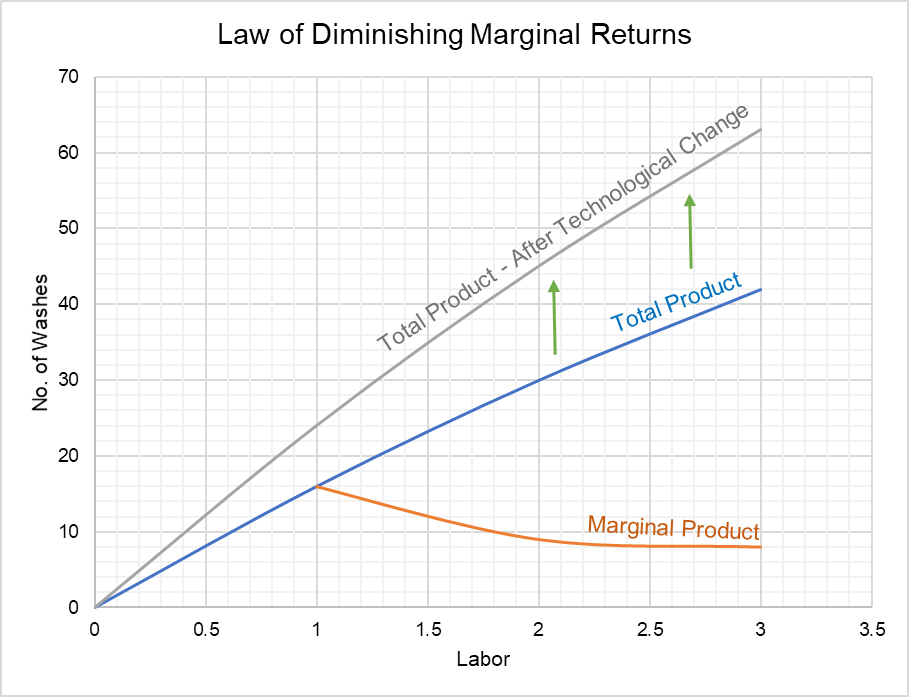Law of Diminishing Returns
Law of diminishing returns states that as we increase units of a factor of production, say labor, while keeping all other factors, such as land and capital, constant, there will be progressively less and less increase in total product.
The increase in total product that results from each additional unit of an input is called marginal product. Hence, law of diminishing returns can also be defined as follows: the marginal product of a factor of production decreases as we increase that factor while keeping the other factors constant. Mathematically speaking, the additional output that the nth unit of an input generates is less than the additional output generated by the unit preceding it i.e. by (n-1)th unit.
You must be wondering why it is so. It is because too many cooks spoil the broth. Efficient production requires a good balance between different inputs. If one factor of production increases without proportionate increase in other inputs, such a mismatch is bound to cause a declining marginal product. There is a lot of empirical analysis behind the law of diminishing returns.
Law of diminishing returns explains the dilemma of stagnating economic growth in different countries of the world. Developing countries with high population and very low capital (i.e. machinery, infrastructure, etc.) suffer from low growth because there are too many workers for too less factories. The opposite is true in case of some developed countries, say Japan, who have an ageing population and hence too less labor to work with the available capital.
Graph and Example
Let’s consider Skyler White’s A1A Car Wash. It takes 30 minutes per wash. Let’s say it has only one washing space and it is open for only 8 hours. It follows that a total of 16 cars be washed (=8 × 60/30). If Skyler decides to run two shifts and hires another worker, her sales may increase to 30 car washes. You must wonder why not 32 (i.e. 2 × 16)? There may be multiple reasons. First, washing tools and machinery need maintenance and a certain down time in unavoidable. Second, two workers might chat around about Whites thereby wasting time or they might have trouble correctly scheduling the shifts thereby resulting in less than optimal sales. If A1A Car Wash decides to hire a third worker, the problem would multiply, and total production may reach 42 car washes per day. Adding fourth worker will probably not add any additional sales. It is because one washing space has a maximum capacity of 48 car washes. No additional sales can be realized by increasing labor without investing in another washing space at the same time. The law of diminishing marginal returns dictates that the total product curve must get flatter i.e. its slope must decrease with increase in the units of an input and the marginal product curve must be downward sloping.
Off course, if A1A opens another washing bay, total production possibility will rise to 96 car washes and total product will start rising again with addition of labor. But if you remember, the law of diminishing returns imposed a condition i.e. there won’t be any change in other factors of production, so land, capital and technology must be the same. If there is technological improvement that reduces the time it takes to wash a car, it will result in a shift in the total product curve.

by Obaidullah Jan, ACA, CFA and last modified on